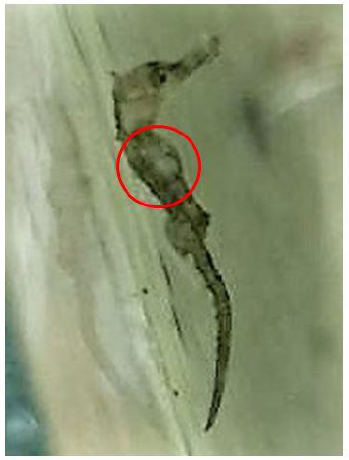Influence of stocking density and temperature on the growth and survival of seahorse juveniles, Hippocampus barbouri (Jordan and Richardson, 1908)
DOI:
https://doi.org/10.17762/sfs.v6i2.195Keywords:
Hippocampus barbouri, Temperature, Stocking density, Growth, SurvivalAbstract
Low survival of newborn seahorses hindered studies on the early life stage. Many important aspects contributing to the survival of newborn seahorses remained unknown. More research on juvenile stage is necessary to optimize the culture protocols. Stocking density may or may not affect fish growth and behavior. Effect of stocking density on the growth and survival of seahorses in the early stages had received much less attention. Temperature is decisive in the early development of fish, with great impact on primary and secondary production and consequently on growth, survival and feeding of juveniles. It affects metabolism rate of organisms which can greatly impact the growth and survival of seahorse particularly at juveniles’ stage. Hence, effects of stocking density and temperature on the growth and survival of Hippocampus barbouri juveniles were studied. Three treatments of 0.3, 0.4 and 0.5 juv/L, respectively 6, 8, and 10 seahorse juveniles per tank, were tested for 12 weeks. Three temperature levels selected for this experiment were 25, 28 and 31°C for 4 weeks of experimental period. There was no significant different (p>0.05) on the growth of H. barbouri juveniles cultured under different stocking density. This may be due to the stocking densities employed in this study has not reached it maximum limit, hence no significance difference between treatments. Highest survival of 90% was recorded at highest stocking density of 10 juv/tank. Temperature between 25 and 28°C showed better growth of H. barbouri juveniles when compared to high temperature of 31°C. Survival of H. barbouri juveniles cultured under different temperature resulted in more than 80% for all treatments. These findings indicated that H. barbouri juveniles can withstand temperature between 25 and 31°C. To conclude, stocking density of 0.5 juv/L produced the best survival while at temperature between 25 and 28 °C produce better growth and survival of H. barbouri.










